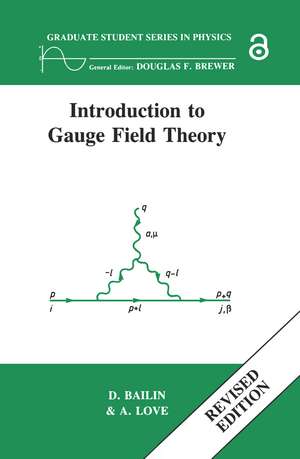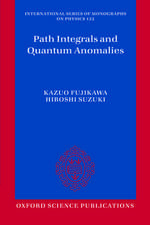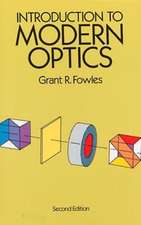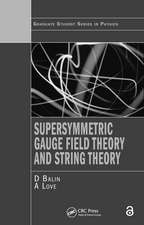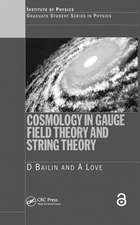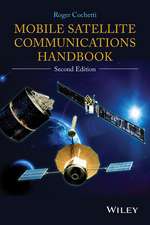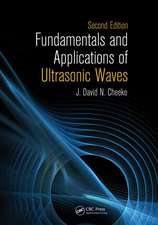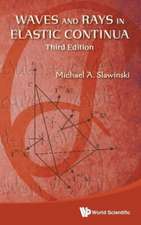Introduction to Gauge Field Theory Revised Edition: Graduate Student Series in Physics
Autor D. Bailinen Limba Engleză Paperback – 1993
Forming a foundation in the subject, the book assumes knowledge of relativistic quantum mechanics, but not of quantum field theory. The book is ideal for graduate students, advanced undergraduates, and researchers in the field of particle physics.
| Toate formatele și edițiile | Preț | Express |
|---|---|---|
| Paperback (1) | 673.22 lei 6-8 săpt. | |
| CRC Press – 1993 | 673.22 lei 6-8 săpt. | |
| Hardback (1) | 1022.23 lei 6-8 săpt. | |
| CRC Press – 28 iun 2018 | 1022.23 lei 6-8 săpt. |
Preț: 673.22 lei
Preț vechi: 792.03 lei
-15% Nou
Puncte Express: 1010
Preț estimativ în valută:
128.81€ • 134.51$ • 106.37£
128.81€ • 134.51$ • 106.37£
Carte tipărită la comandă
Livrare economică 15-29 aprilie
Preluare comenzi: 021 569.72.76
Specificații
ISBN-13: 9780750302814
ISBN-10: 075030281X
Pagini: 384
Ilustrații: 187 b/w images
Dimensiuni: 156 x 234 x 18 mm
Greutate: 0.54 kg
Ediția:Revised
Editura: CRC Press
Colecția CRC Press
Seria Graduate Student Series in Physics
ISBN-10: 075030281X
Pagini: 384
Ilustrații: 187 b/w images
Dimensiuni: 156 x 234 x 18 mm
Greutate: 0.54 kg
Ediția:Revised
Editura: CRC Press
Colecția CRC Press
Seria Graduate Student Series in Physics
Public țintă
UndergraduateCuprins
Path integrals. Path integrals in non-relativistic quantum mechanics. Classical field theory. Quantum field theory of a scalar field. Scattering amplitudes. Feynman rules for theory. Renormalisation of theory. Quantum field theory with fermions. Gauge field theory. Feynman rules for quantum chromodynamics and quantum electrodynamics. Renormalisation of QCD and QED at one-loop order. QCD and asymptotic freedom. Spontaneous symmetry breaking. Feynman rules for electroweak theory. Renormalisation of electroweak theory. Grand unified theory. Field theories at finite temperature. Appendices.
Descriere
Introduction to Gauge Field Theory provides comprehensive coverage of modern relativistic quantum field theory, emphasizing the details of actual calculations rather than the phenomenology of the applications.
Forming a foundation in the subject, the book assumes knowledge of relativistic quantum mechanics, but not of quantum field theory.
Forming a foundation in the subject, the book assumes knowledge of relativistic quantum mechanics, but not of quantum field theory.
